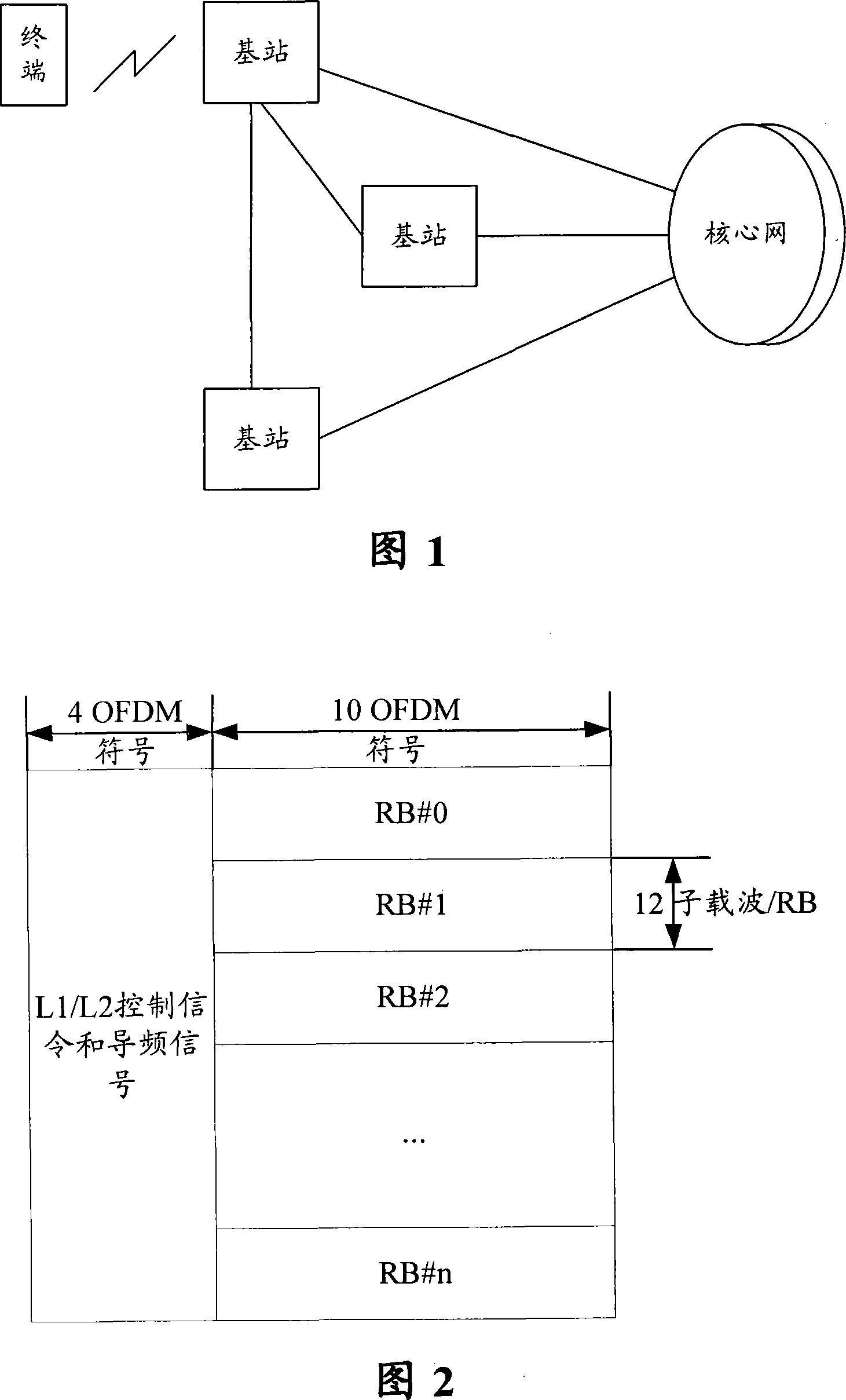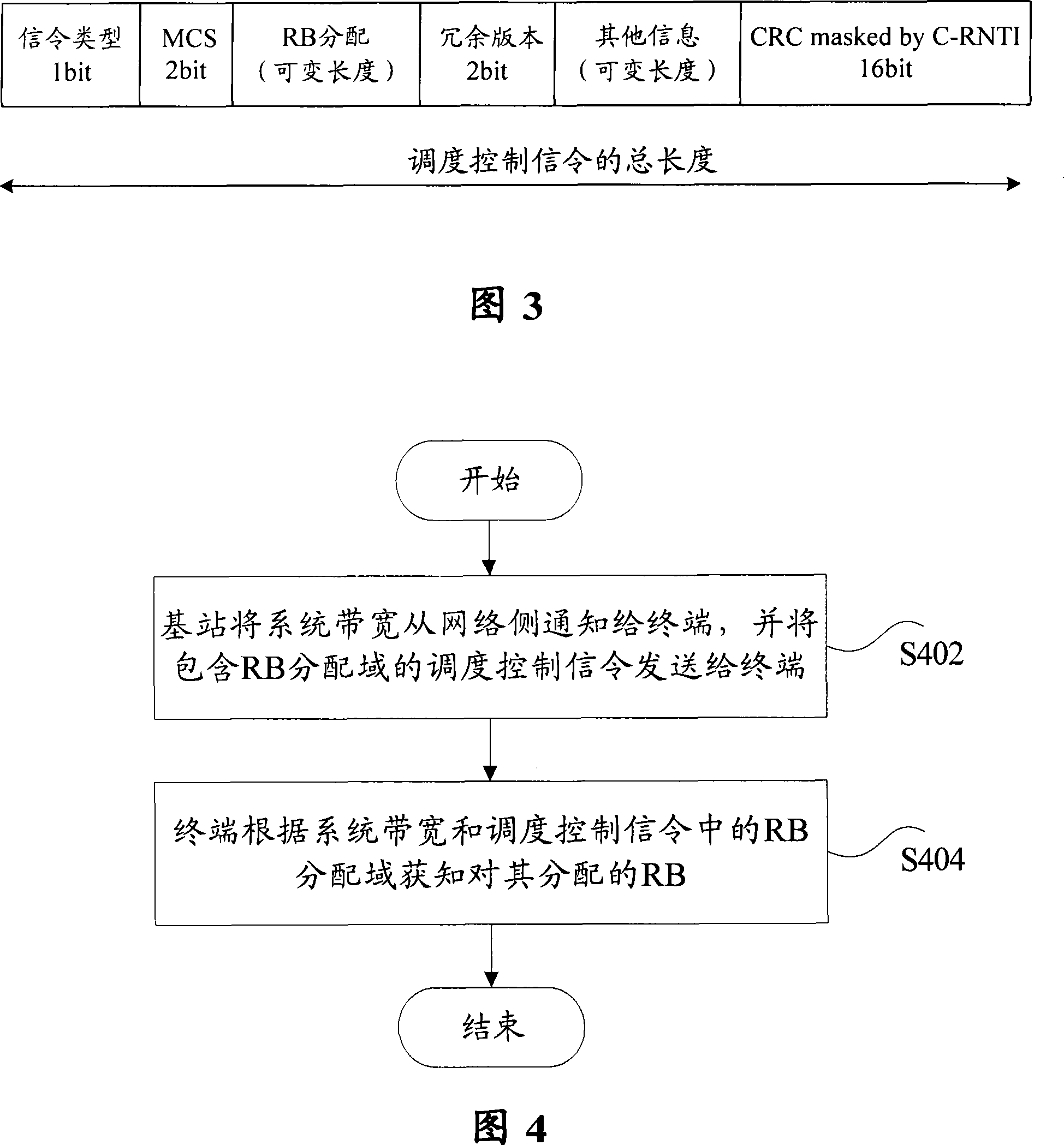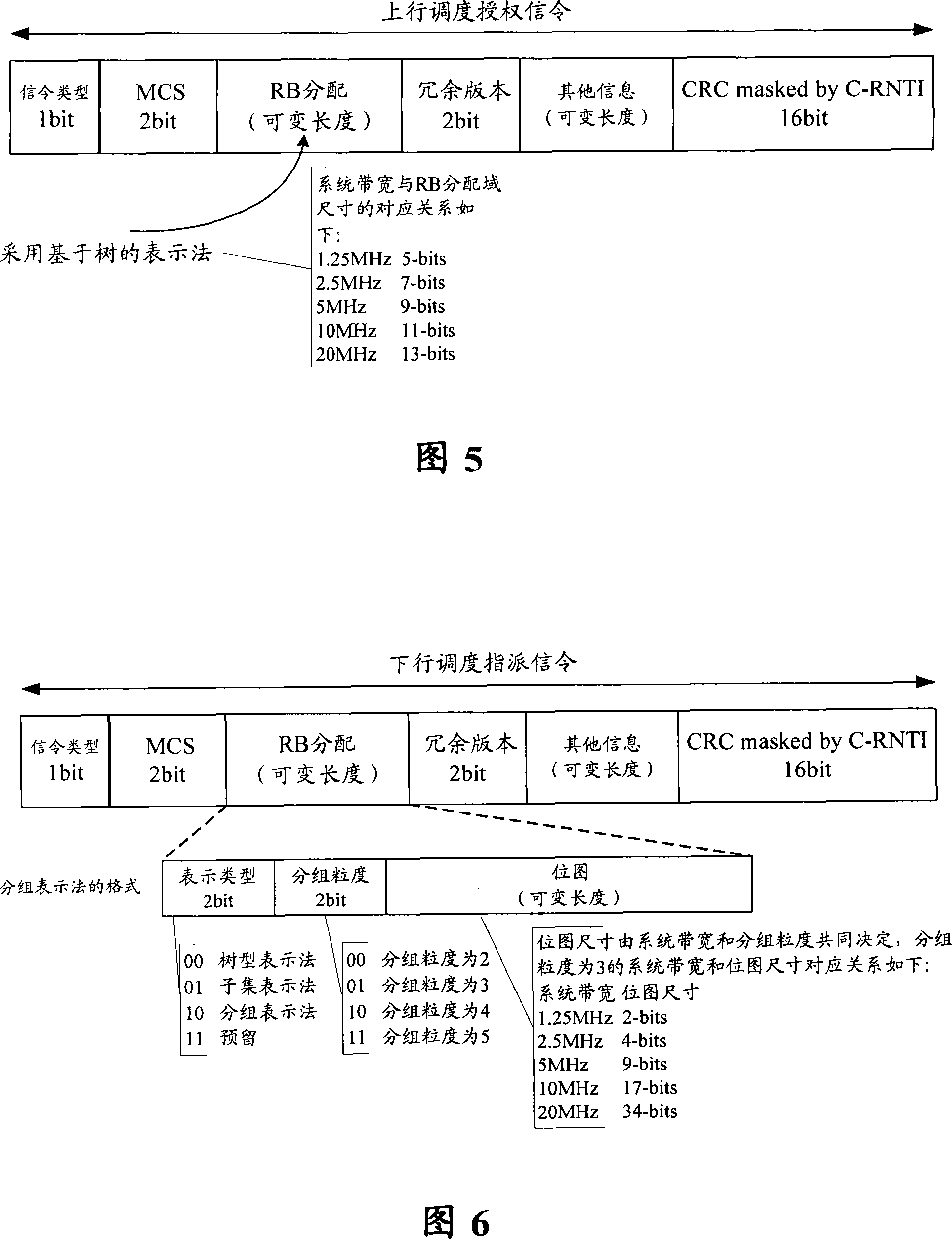Indication method for wireless resource allocation of LTE system
A technology of wireless resources and indication, applied in the field of communication, can solve the problems that have not been raised, and achieve the effect of reducing the scheduling overhead
- Summary
- Abstract
- Description
- Claims
- Application Information
AI Technical Summary
Problems solved by technology
Method used
Image
Examples
example 1
[0035] Example 1: For uplink RB
[0036] For the allocation of uplink RBs, the LTE system has decided to adopt a tree representation method. In this representation method, the size of the RB allocation field is Where N is the number of RBs of the system in a subframe, Indicates rounding up. The terminal can know the number of RBs of the system in one subframe according to the system bandwidth. If the terminal does not know the system bandwidth, it will not know how to resolve the RB allocation domain after receiving the uplink scheduling grant signaling, unless the uplink scheduling grant signaling contains system bandwidth related information.
[0037] Suppose there is an LTE system with a system bandwidth of 5MHz, and each subframe has 25 RBs. Uplink RB allocation has 25 * 26 2 = 325 In this case, 9 bits are required for representation, so the size of the RB all...
example 2
[0038] Example 2: For downlink RB
[0039] For downlink RB allocation, the LTE system has not yet decided what representation method to use. Since discontinuous downlink RBs need to be allocated to the same terminal in one downlink scheduling assignment signaling, this brings difficulty to the expression of downlink RB allocation. Especially for a system with a large system bandwidth, for example, 10MHz, 20MHz, if every possible allocation situation is represented, it will bring a lot of overhead. However, for systems with a small system bandwidth, eg, 1.25MHz, it may be both flexible and simple to use a bitmap to represent all allocations.
[0040]Therefore, there may be multiple representation methods for downlink RB allocation, for example, full bitmap method, tree representation method, subset representation method and group representation method. Even with the same representation method, the size of the downlink RB allocation field may be different for systems with diff...
PUM
 Login to View More
Login to View More Abstract
Description
Claims
Application Information
 Login to View More
Login to View More - R&D
- Intellectual Property
- Life Sciences
- Materials
- Tech Scout
- Unparalleled Data Quality
- Higher Quality Content
- 60% Fewer Hallucinations
Browse by: Latest US Patents, China's latest patents, Technical Efficacy Thesaurus, Application Domain, Technology Topic, Popular Technical Reports.
© 2025 PatSnap. All rights reserved.Legal|Privacy policy|Modern Slavery Act Transparency Statement|Sitemap|About US| Contact US: help@patsnap.com



